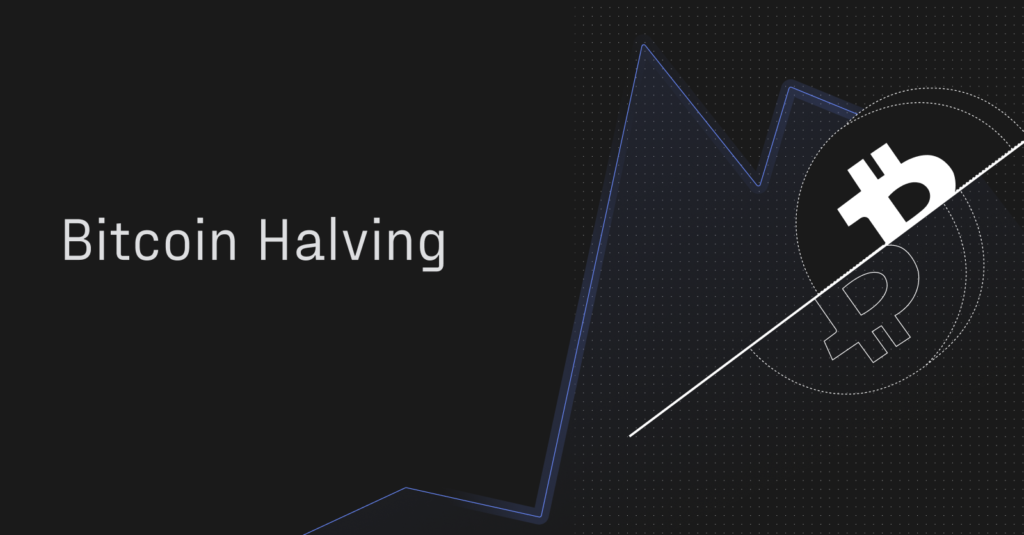Bitcoin Halving: What It Is and Why It Matters for Crypto Investors

What Is Bitcoin Halving?
Bitcoin halving is a scheduled event that takes place approximately every four years, reducing the block reward for miners by 50%. This mechanism limits the supply of new bitcoins entering the market, increasing scarcity and potentially driving up the price if demand remains consistent.
Miners, who validate transactions and secure the Bitcoin network, receive a reward for successfully adding new blocks to the blockchain. With each halving event, their reward is cut in half, making mining less profitable unless Bitcoin’s price appreciates significantly.
Key Takeaways:
- Bitcoin halvings occur roughly every four years, cutting mining rewards in half.
- The halving event reduces the rate at which new bitcoins are created, increasing scarcity.
- The most recent Bitcoin halving took place on April 20, 2024, reducing the block reward to 3.125 BTC.
- The final halving is expected around 2140, when the maximum supply of 21 million bitcoins is reached.
Is Bitcoin Halving a Good Thing?
Bitcoin halving is a critical component of the Bitcoin ecosystem, influencing supply, demand, and investor sentiment. However, its impact varies depending on perspective.
1. Inflation Control
Bitcoin halving is designed to counteract inflation by slowing the introduction of new coins into circulation. Unlike fiat currencies, which can be printed endlessly by central banks, Bitcoin’s halving mechanism ensures a predictable, deflationary supply.
However, this mechanism does not protect Bitcoin users from inflation in fiat currencies. Gains made in Bitcoin’s value may serve as a hedge, but they do not prevent the broader economic effects of inflation in traditional markets.
2. Demand and Price Impact
Historically, Bitcoin halvings have led to increased demand and price appreciation. Reduced supply, coupled with growing interest from investors, has often driven significant market rallies. However, past performance does not guarantee future results, and external factors can influence Bitcoin’s price.
3. Investment Perspective
While Bitcoin was initially designed as a decentralized payment system, it has evolved into a popular investment asset. Investors anticipate that each halving will lead to price increases, making Bitcoin an attractive long-term holding.
However, investing in Bitcoin remains speculative. Price movements depend on various factors, including market sentiment, macroeconomic conditions, and regulatory developments.
4. Impact on Miners
Mining profitability declines after each halving unless Bitcoin’s price rises to compensate for the reduced block reward. Large mining operations often remain profitable due to economies of scale, while smaller miners may struggle to stay competitive.
For example, Marathon Digital Holdings, one of the largest mining firms, increased its Bitcoin holdings to 16,930 BTC and expanded its mining fleet to 231,000 machines ahead of the 2024 halving to remain competitive.
Smaller miners and mining pool participants may see diminished returns, making it harder to sustain operations.
5. Effects on Consumers
For everyday users, Bitcoin halving primarily impacts price volatility. Those using Bitcoin for purchases or remittances may experience fluctuations in value, but the direct effects of the halving event itself are limited.
When Is the Next Bitcoin Halving?
The next Bitcoin halving is expected to take place in 2028, reducing the block reward to 1.625 BTC per block.
Historical Bitcoin Halvings:
- November 28, 2012: Block reward reduced from 50 BTC to 25 BTC
- July 9, 2016: Block reward reduced from 25 BTC to 12.5 BTC
- May 11, 2020: Block reward reduced from 12.5 BTC to 6.25 BTC
- April 20, 2024: Block reward reduced from 6.25 BTC to 3.125 BTC
As of May 2024, approximately 19.7 million bitcoins are in circulation, with only 1.3 million BTC left to be mined.
Should You Invest in Bitcoin During a Halving?
Many investors view Bitcoin halving events as bullish indicators, given Bitcoin’s historical price increases following past halvings. However, the exact timing and extent of price appreciation remain uncertain.
Considerations for Investors:
- Market Timing: Bitcoin price movements post-halving are not immediate and can take months or years to materialize.
- Regulatory Environment: Bitcoin’s market is increasingly influenced by regulations, including ETF approvals and institutional adoption.
- Macroeconomic Factors: Interest rates, inflation, and broader financial markets can affect Bitcoin’s performance.
The 2024 halving was unique due to the SEC’s approval of Spot Bitcoin ETFs, which drove significant institutional investment into Bitcoin. However, market sentiment shifted post-halving, leading to short-term price declines before renewed bullish momentum.
Common Questions About Bitcoin Halving
What Happens When Bitcoin Halves?
Bitcoin’s mining reward is cut in half, reducing the rate at which new bitcoins enter circulation. This scarcity mechanism is intended to support long-term price appreciation.
What Are the Bitcoin Halving Dates?
Bitcoin halvings have occurred or will occur on the following dates:
- November 28, 2012: 25 BTC
- July 9, 2016: 12.5 BTC
- May 11, 2020: 6.25 BTC
- April 20, 2024: 3.125 BTC
- Mid-2028 (Projected): 1.625 BTC
How Many Bitcoin Halvings Are Left?
If Bitcoin maintains its current schedule of halvings every four years, there are approximately 29 halvings remaining until Bitcoin mining rewards reach zero in 2140.
What Happens When Bitcoin Hits Its Supply Limit?
When all 21 million bitcoins have been mined, miners will no longer receive block rewards. Instead, they will earn transaction fees as their primary source of revenue, ensuring the continued security and functionality of the Bitcoin network.
The Bottom Line
Bitcoin halving is a fundamental part of Bitcoin’s economic model, ensuring a controlled and predictable supply. While halvings have historically been associated with price increases, they also pose challenges for miners and introduce market uncertainty.
For long-term investors, Bitcoin halving events present opportunities, but they should be approached with a clear understanding of market dynamics, historical trends, and risk factors.
Bitcoin’s next halving in 2028 will further decrease block rewards, influencing supply and potentially shaping the next phase of Bitcoin’s adoption and valuation.
Disclaimer: This article is for informational purposes only and should not be considered financial advice. Always conduct your own research before making investment decisions.